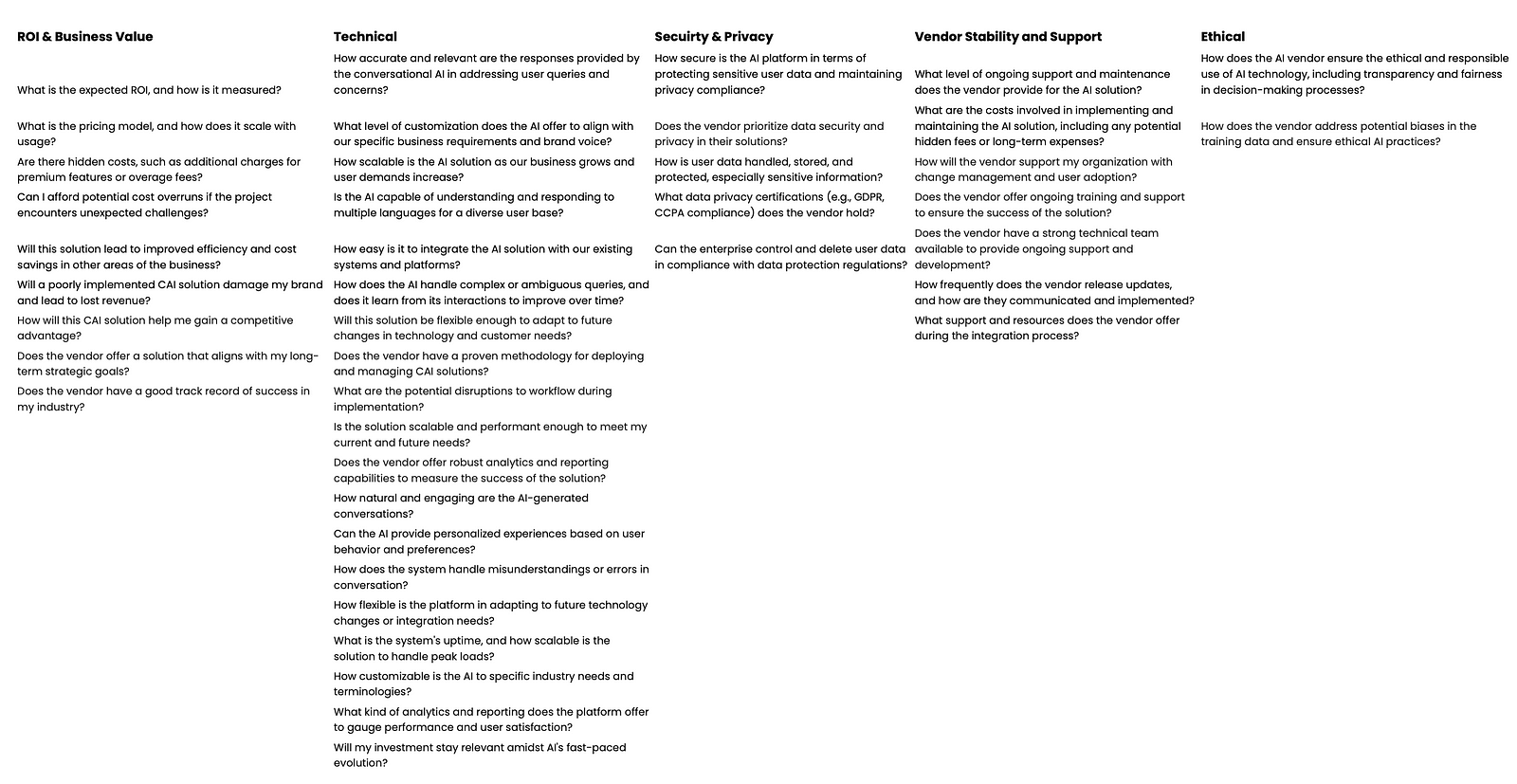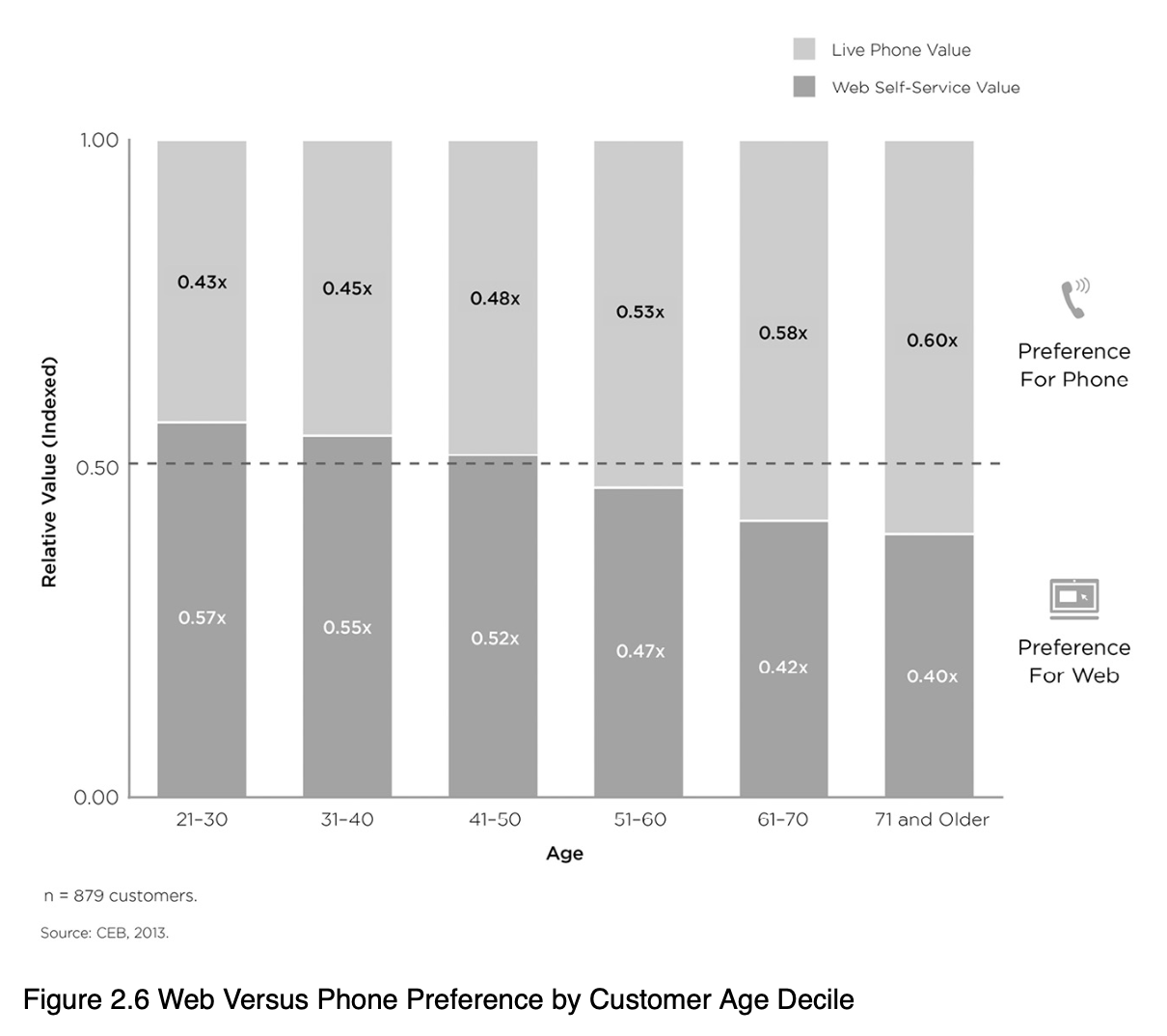So, you are an enterprise decision-maker who wants to evaluate ROI on Conversational AI. But you have got a lot of things at stake. You have concerns about ROI, Operations, Tech, Security, Privacy, etc.
Here are the top five concerns we see in customers who initially get on a call with us.
- How accurate and relevant are the responses provided by the conversational AI in addressing user queries and concerns?
- How secure is the AI platform in protecting sensitive user data and maintaining privacy compliance?
- Will this investment deliver a positive return on investment (ROI)?
- What ongoing support and maintenance level does the vendor provide for the AI solution?
- How does the AI handle complex or ambiguous queries, and does it learn from its interactions to improve over time?
Above are only a small subset of a wide range of concerns our business decision-makers face

Hence, instead of answering these questions one by one, why not give tools or mental models that can help you make a sound decision? That’s the idea that inspired a series of posts, including this one.
In this post, let’s address your concern about evaluating ROI on Conversational AI when you don’t have a technical background.
Before we jump into it, let’s clarify a few terms so that you are not confused. Do note that there are ongoing debates in the wider AI community about the accuracy of these terms. But here, we will look at it in the context of Conversational AI.
AI (Artificial Intelligence)
It is like the brain of modern technology, capable of performing tasks that typically require human intelligence, such as understanding languages, recognizing patterns, and solving problems.
Conversational AI
It is a branch of AI specialized in the art of conversation, similar to a linguist within the broad field of humanities. It focuses on enabling machines to understand, process, and respond to human language in a way that mimics human-like interactions.
Generative AI
It is an artist within the AI realm with the creativity to produce new content, from images to text and music, that didn’t exist before. It utilizes complex models to generate outputs based on learned patterns and data.

Differences between AI, Conversational AI & Generative AI
| Feature | AI (Artificial Intelligence) | Conversational AI | Generative AI |
| Definition | A broad field of computer science aimed at creating systems that can perform tasks that typically require human intelligence. | A subset of AI designed to engage users in human-like conversations using natural language processing (NLP). | A type of AI focused on generating new content, data, or solutions that didn’t previously exist. |
| Primary Function | To simulate human intelligence in machines to perform a wide range of tasks. | To enable machines to understand, process, and respond to human language in a way that mimics human conversation. | To create original content, including text, images, music, code, and more, based on learned data patterns. |
| Key Technologies | Machine Learning (ML), Deep Learning, NLP, Robotics, Computer Vision. | NLP, Machine Learning, Speech Recognition, Text-to-Speech (TTS) technologies. | Deep Learning (e.g., GANs – Generative Adversarial Networks, VAEs – Variational Autoencoders). |
| Applications | Automation, Data Analysis, Robotics, Predictive Modeling, etc. | Chatbots, Virtual Assistants, Customer Service Automation. | Content Creation (art, music, writing), Data Augmentation, Synthetic Data Generation. |
| Characteristics | Can be rule-based or learning-based. Aims to replicate or surpass human capabilities in specific tasks | Focused on language understanding and generation. Engages in dialogue with a human-like touch. | Emphasizes creativity and innovation in output. Generates new, unseen content or data |
| Examples | Autonomous vehicles, Facial recognition systems. | Siri, Alexa, Google Assistant, chatbots on websites. | Deepfakes, AI-generated art, AI-composed music, creative writing. |
Now let’s understand why you need Conversational AI? Feel free to skip this section if you already know.
Why Conversational AI?
You open a bank account or buy insurance, lured by well-designed websites and big promises. All seems good. But then, oh no — a surprise fee, a denied claim, or missing paperwork! You call for help, only to get stuck in a phone maze from hell.
Yet, as you listen intently, you realize your specific issue isn’t even listed. A growing sense of frustration builds as you desperately try to find a way out of the maze, searching for some hidden option that will lead you to a real person. Minutes turn into hours in this quest.
When you finally connect with a human voice, the relief is short-lived. You’re asked to repeat your issue, again and again, each time becomes more annoying than the last. The cumbersome layers of bureaucracy and persistent miscommunication become increasingly painful.
Sounds familiar, doesn’t it? We’ve faced it too.
The Myth of Customer Delight

CEB (acquired by Gartner), conducted comprehensive research with 400 companies and engaging thousands of customers. They found delighting customers doesn’t really make them loyal.

“Impossible! Our agents receive top-notch training to delight customers!”
Alright, do you dream of spending your weekend hours talking to an insurance company’s customer service? Of course! Because who wouldn’t trade a sun-soaked afternoon at the beach or a cozy movie marathon for that delightful experience?
The Unhappy Customer

Here’s a kicker: Research also shows happy customers tell about 3 people. Unhappy customers? They’ll let over 10 people know!
The Fix: Make It Easy!

Customers love easy solutions, and they want to be in control. Web-based self-service or Conversational AI is their go-to. Who wants to spend hours on hold anyway?
Why Generative AI in Conversational AI?
Isn’t Generative AI used to create images and text like MidJourney or ChatGPT? How does it make sense in customer support? Before Generative AI, chatbots didn’t understand users’ questions, and tricks like keyword matching were used to trigger pre-written responses or flows. Here are more applications of Generative AI in customer support.
- Handling Complexity: Generative AI can understand and generate natural language, handling more complex and nuanced customer interactions than traditional conversational AI.
- Personalization at Scale: Generative AI can tailor conversations to individual users by generating responses that consider the user’s preferences, history, and context, improving the customer experience significantly.
- Continuous Learning and Improvement: Generative AI models can learn from interactions to improve performance over time, ensuring that the conversational AI system evolves with changing user needs and preferences.
- Cost Reduction: Automating more interactions with a high degree of understanding and responsiveness can significantly reduce operational costs associated with customer service.
- Data Generation for Training: Generative AI can create synthetic conversations and scenarios for training purposes, enhancing the conversational AI’s ability to deal with a wider range of queries.
- Multilingual Support: With the ability to generate and understand multiple languages, Generative AI can help enterprises cater to a global audience without significant additional investment in language-specific resources.
How to Evaluate ROI
To ensure ROI on Conversational AI, it’s important to write down the present problems you face and the outcome you would like to achieve from implementing Conversational AI (If you are struggling with this, you can schedule a discovery call with our experts).
The primary reason would be to reduce customer efforts and increase loyalty. This would include outcomes such as:
- Reducing repetitive calls from customers for the same queries.
- Reducing call switching.
- Reducing call transfers to different departments.
- Reducing the need for customers to repeatedly repeat the same information to customer support.
- Reducing query resolution time.
Another reason why our customers approach us would be to reduce efforts on the employee’s side in supporting customers :
- Deflect simple inquiries and reduce call volume and agent fatigue.
- Automate Repetitive Tasks and free up time for complex issues and customer engagement. Reduce the need to train employees over and over.
- Enable agents to handle more challenging cases.
- Ensuring employee well-being, being available 24 x 7 for customers without having your agent work on night hours.
Business goals would be another reason:
- Scaling to 10x customers without scaling the support team.
- Increase repeat customers.
- Provide data to personalize support and improve efficiency.
- Reduce call centre costs, training expenses, and agent turnover.
- Reducing customer churn by providing personalized experiences and proactive support.
Now based on these outcomes, you need to define the KPIs that need to be tracked
| Reduce Customer Effort & Increase Loyalty KPIs | Reduce Employee Effort KPIs | Business Goals KPIs |
| Number of repeat calls for the same query | Number of inquiries deflected by Conversational AI | Customer churn rate |
| Number of times customers are switched between agents. | Average call handling time | Number of customers supported without increasing support team size |
| Number of calls transferred to different departments | Number of repetitive tasks automated | Customer Effort Score (CES) |
| Customer satisfaction score on information repetition | Number of training sessions required for agents | Agent turnover rate |
| Average query resolution time | Customer satisfaction score on agent expertise | Customer churn rate |
Having clarity on these KPIs is the first step in your journey towards implementing Conversational AI. Tracking these metrics throughout implementation will help you ensure your ROI on Conversational AI implementations. The next post will navigate the Cost Considerations in Conversational AI Deployment.
Schedule a discovery call with us to identify your present challenge and to arrive at KPIs by achieving clarity on your business outcomes.
Hello! I’m a problem solver at Tars, passionate about blending AI, design, and automation in the SaaS realm. With roles like Design Lead, Engineering Lead, and Writer at Hacker Noon under my belt, I’ve nurtured a mix of skills that drive innovation.
At Tars, I help companies automate customer support in both public sector and private enterprises, making processes smoother. My goal? To create solutions that not only answer today’s issues but anticipate tomorrow’s questions.
I share my insights on Large Language Models, Transformers and other emerging technologies at Hacker Noon, I also help startups communicate their visions clearly. I’ve learned that understanding users, showing empathy, and asking the right questions are the stepping stones to success.
I’m always open to connecting with professionals who share my excitement for technology and its power to change lives. If you’re curious about AI, design, or automation, feel free to reach out. Let’s create something impactful together! 🚀

0 Comments on "How to Evaluate ROI on Conversational AI When You Don’t Have a Technical Background?"